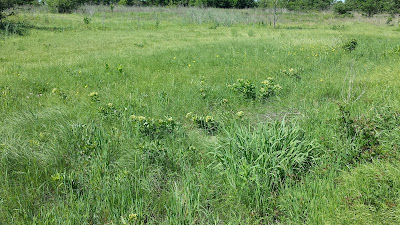How we spend our days is, of course, how we spend our lives.
What we do
with this hour, and that one, is what we are doing.
A schedule defends
from chaos and whim.
It is a net for catching days.
It is a scaffolding
on which a worker can stand and labor with both hands at sections of
time.
A schedule is a mock-up of reason and order—willed, faked, and so
brought into being;
it is a peace and a haven set into the wreck of
time;
it is a lifeboat on which you find yourself, decades later, still
living.
~ Annie Dillard in The Writing Life
 |
| You know the joke - A man out standing in his field. If this was last week he'd have been sloshing through mud and water. |
"Are we doing anything Friday night? Saturday? Saturday night?" I ask these questions regularly.
"Not that I know of," is his response. "I am running a 10K on Sunday, though." [Oops]
I pulled out the phone and laptop and compared calendars.* We were doubled booked in one spot and generally overbooked for the next five days.
Then began the discussion. What did we want to do? What could we reasonably accomplish? What had we promised? When would we sleep?
Once the schedule was ironed out it was necessary to do some advance preparation - gas up the car, pack gear into a backpack, find the right hats/shoes/binoculars. Remember the insect repellent (red bugs are out) and water.
 |
| Almost obscured by a thick swath of switchgrass. |
We are a decent team. Collaborators for 36 years, we each keep track (most of the time) of certain things. There is a confidence in knowing we can rely on each other - we will be prepared. But then the binoculars or a cell phone are left at home. What then?
It doesn't usually matter. The "forgetter" is frustrated. The other is forgiving. We move on.
Two recent events reminded me of what a wonderful collaborator joins me on most adventures. On Friday we went on a "wild frog chase." [Much like the "goose chase," it becomes "wild" when the creature refuses to show up.] As the other chasers were turning left, we turned right. I had wanted to check on the usual frogs and see if the mystery mammal might give us a show at the other side of the park.
It was late. We were both tired.
"I'd really like to go to the pond," I said. DH turned right and parked closer to the big pond. He was "in." Then we walked the path together - observing the mammal (still a mystery, but we think River Otter), waking a heron (we did not mean to), startling more than a couple of frogs on the bank.
 |
| Ready to hike. |
We walked the edge of the water and listened to the frog songs - overlapping trilling, barking, thrumming, purring, and tapping. Add in the night insects and it was a concert like no other.
 |
| Gentle hands hold a Gulf Coast Toad. |
Not only was he "in" for one more listen, but the give and take of observation and experience added to the enjoyment - identifying the heron, observing the mammal (he saw its head, I saw the back and later found videos for comparison), and jumping as something plops into the water. Simply getting a photo or tape takes coordination as he lights up our path and holds the flashlight for photos. I take the photos and operated the recording app.
The other example occurred at the wildflower/grass/plant hike at another park. He observed
SOMETHING on the side of the road.
"There, there," he pointed. We both watched a small dark creature sprint across the road.
"Rock Squirrel," I said.** DH replied that someone had been talking about Rock Squirrels in the area so that was probably right.
Now, would we have this much fun if we did not have a partner in the wild? I don't know, but I doubt I would. I love the give and take. I'm delighted by his excitement at spotting something, of reaching a goal, and of simply enjoying the out of doors.
And I doubt if either one of us would be making the effort to get out to the parks, lakes, rivers, and fields we make now if we were on our own. We share, we pace each other, we encourage (and probably goad), he makes me drink water, and I pack the snacks. We honor the other's choices and skills.
We continue to fight an inclination to be too much at home and too much away. And the desire to shun the calendar and scheduling is over. It is different when one is scheduling fun - not work. Now we must fight the problem of over-scheduling.
After two planned, but unplanned years in retirement, we seem to be finding our way.
How fortunate am I to share my days with this man.
 |
| Patience. |
NOTES:
* I mistakenly downloaded the calendar of the school district from which I graduated high school. It was a silly mistake. I was looking for the date of an award ceremony and ended up with every competition, test, and sneeze on my laptop. I do hope it is not one of those things that will automatically update for future years. I wish all these young people well, but I do not need to know when district tennis, regional golf, or the drum major tryouts might be.
** It is my third sighting of a Rock Squirrel. They are shy creatures. I've seen them on the cliff walk at our favorite vacation spot on the Frio, among the boulders at the local dam, and now running across Booty's Road in Williamson County.



















































































